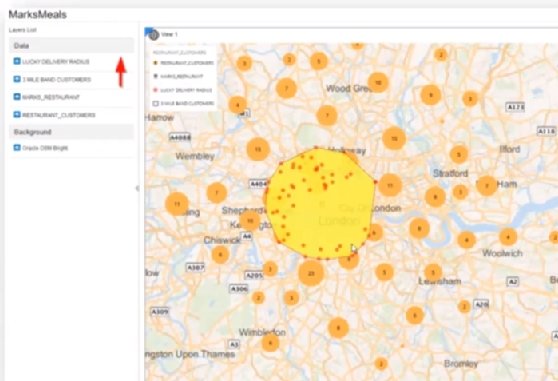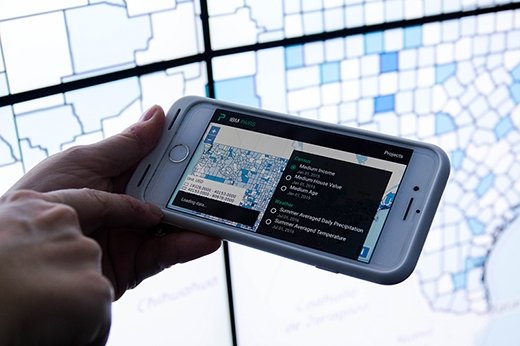Can We Conduct Spatial Analysis With Non Sptial Data
Spatial data is whatever blazon of information that directly or indirectly references a specific geographical expanse or location. Sometimes called geospatial information or geographic information, spatial data can also numerically represent a physical object in a geographic coordinate system. However, spatial information is much more than a spatial component of a map.
Users tin salve spatial data in a variety of unlike formats, equally it tin also contain more than than location-specific data. Analyzing this data provides a better agreement of how each variable impacts individuals, communities, populations, etc.
There are several spatial data types, but the two primary kinds of spatial data are geometric information and geographic data.
Geometric data is a spatial information type that is mapped on a two-dimensional apartment surface. An case is the geometric data in floor plans. Google Maps is an application that uses geometric information to provide authentic direction. In fact, it is 1 of the simplest examples of spatial data in activeness.
Geographic data is data mapped around a sphere. Most often, the sphere is planet globe. Geographic data highlights the latitude and longitude relationships to a specific object or location. A familiar example of geographic data is a global positioning system.
Georeferencing and geocoding
Similar processes, georeferencing and geocoding, are of import aspects of geospatial analysis. Both geocoding and georeferencing involve fitting information into the real world by using appropriate coordinates, but that is where the similarity ends.
Georeferencing concentrates on assigning information coordinates to vectors or rasters. This approach helps accurately model the planet's surface.
Geocoding, on the other hand, provides accost and location descriptors. These can include data about cities, states, countries, and and then on. Each exact coordinate references a specific location on the earth'southward surface.

Vector and raster
Vector and raster are common data formats used to shop geospatial information.
Vectors are graphical representations of the real world. There are three main types of vector data: points, lines and polygons. The points help create lines, and the connecting lines grade enclosed areas or polygons. Vectors often represent the generalization of features or objects on the planet's surface. Vector data is usually stored in shapefiles, sometimes referred to as .shp files.
Raster represents data presented in a pixel grid. Each pixel stored within a raster has value. This can be anything from a unit, color or data about a specific element. Typically, raster refers to imagery, but in spatial analysis it oft refers to an orthoimage or the photos taken from aeriform devices or satellites.
There is also something called an attribute. Whenever spatial data contains additional information or not-spatial data, information technology is called an attribute. Spatial data can take any number of attributes about a location. For instance, this may be a map, photographs, historical information or anything else that may exist deemed necessary.
What is spatial data science?
Spatial data science concentrates on extracting deeper insights from data by leveraging a comprehensive set of spatial algorithms and belittling methods. These include using machine learning and deep learning to identify hidden patterns within the information. This arroyo helps improve predictive models.
Spatial data may also include attributes that provide more information almost the entity it represents. This helps users empathize where things happen and why they happen there. For example, geographic information systems (GIS) and other specialized software applications help access, visualize, manipulate and appoint in spatial analysis.
Experts expect spatial data scientific discipline will become more than of import as government agencies and enterprises strive to make smarter data-driven decisions.
Other aspects of spatial data science include spatial data mining and data visualization.
Spatial data mining describes the process of discovering hidden patterns in large spatial information sets. As a central driver of GIS application evolution, spatial data mining allows users to excerpt valuable data on contiguous regions and investigate spatial patterns. In this scenario, spatial variables like altitude and management are taken into account.
Information visualization software, such as Tableau, allows information scientists and marketers to connect different spatial data files like Esri File Geodatabases, GeoJSON files, Keyhole Markup Language (KML) files, MapInfo tables, Shapefiles and TopoJSON files. In one case connected, users can create points, lines and polygon maps using the information in spatial data files, lidar data files and geospatial data files.
Spatial data is important for the internet of things (IoT). It helps IoT protocols use remote sensing to collect data for spatial assay. Spatial data is as well used in transportation and logistics to aid companies understand which machine would work best at a specific location, make accurate fourth dimension estimations for deliveries and track deliveries in real time.

Ecology technologies also use spatial data to monitor temperature patterns, tidal patterns and more. The ability to track at-risk areas in combination with historical data, weather data and geospatial data gives scientists meliorate information to predict natural disasters.
This was last updated in June 2021
Continue Reading Nearly spatial data
- Top data visualization techniques and how to all-time utilize them
- IBM PAIRS Geoscope brings geospatial-temporal data to devs
- Geospatial information a means for deeper understanding
- v benefits of geospatial visualization when analyzing IoT data
- Big information or bust: The geospatial data connection to IoT
Dig Deeper on Database management
-

vector graphics
-
![]()
Ordnance Survey opens up straight, API access to location data for public sector
-

Geospatial data a ways for deeper agreement
-

Latest Tableau BI software update upgrades map applied science
Can We Conduct Spatial Analysis With Non Sptial Data,
Source: https://www.techtarget.com/searchdatamanagement/definition/spatial-data
Posted by: joneswattelf.blogspot.com







0 Response to "Can We Conduct Spatial Analysis With Non Sptial Data"
Post a Comment